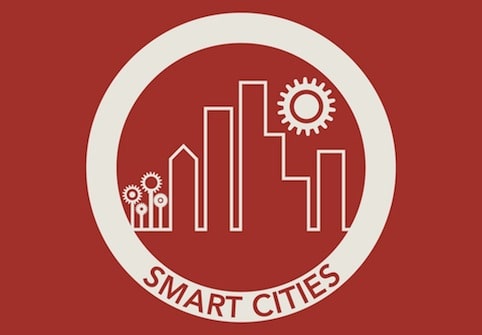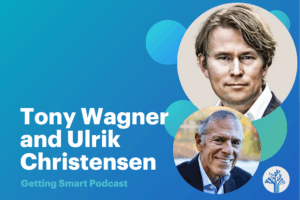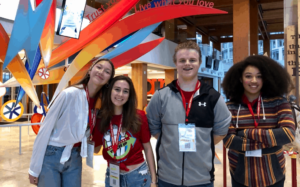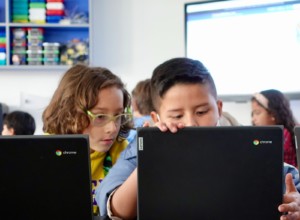Why Public Schools Struggle to Innovate

By: Michael B Horn
Why do public schools struggle to innovate?
It’s not because they are public per se. Private schools struggle with certain kinds of innovation, too. Embracing new forms of blended learning or offering a lower-priced education have been difficult for independent schools, for example.
Public schools’ struggles to innovate aren’t unique to education either. Businesses struggle consistently with theinnovator’s dilemma—the ability to prioritize disruptive innovations that would cannibalize their existing business.
So why do all established organizations struggle with disruptive innovation or innovations that fundamentally challenge their status quo?
The reason is that as organizations come into being, they establish a business—or organizational—model comprised of four interdependent components. Organizations start with a value proposition—a product or service that helps customers or constituents do a job that have been trying to more effectively, conveniently and affordably than they otherwise could. To deliver on that value proposition, an organization assembles a set of resources—people, products, technologies, equipment, and facilities. As the organization repeatedly uses its resources to deliver its value proposition, processes, habitual ways of getting recurrent things done, coalesce. Much of culture lives in an organization’s processes, or an organization’s shared way of solving problems. This manifests itself in schools in everything from how they create their schedules to how students gain permission to go to the bathroom. And culture is by its nature really difficult to change. Soon a profit, or revenue, formula emerges as the organization follows these processes to use its resources to deliver the value proposition. Simply speaking, the revenue formula defines how much money the organization must bring in to break even and be sustainable. That in turn determines the kinds of value propositions that the business model can and cannot offer, which means that these four elements become interdependently locked very quickly.
These four components help define an organization’s capabilities but also—and perhaps most importantly—what it is not capable of doing. Innovations that conform to the business model are readily adopted. Any innovation that doesn’t is either rejected or the organization co-opts the innovation by forcing it to conform. When this happens, it means that the organization has lost the ability to respond to fundamental changes in its sector or market.
Traditional public school districts also have five added challenges to innovating.
- Because district and political leadership can shift often, pursuing, refining, and staying the course with an innovation that will take some time to implement let alone perfect can be difficult. For political reasons, changes in leadership often mean the introduction of new initiatives. This means lack of continuity and often leads teachers to say, “This too shall pass” if we just keep our classroom door closed and go about business as usual. Non-profit charter schools with good and continuous leadership can have an advantage here.
- In many cases, for political reasons school districts are unable to create a new and autonomous business model, but research shows that doing this is often critical to solving the innovator’s dilemma.
- Because there is little to no “nonconsumption” of schooling in America—meaning, nearly everyone has access to what appears to be a free schooling option—there is less room to innovate.
- Historically communities have been unwilling to let schools fail because of how important their role is from a social perspective in the community, which has led to stratification in the schooling environment, as parents and communities have not been risk tolerant.
- Public school districts serve an unusually high number of stakeholders with different jobs to be done in an intricately interdependent system. This makes it difficult for new innovations to be accepted without significant modification to meet the diverse needs of such a complicated ecosystem.
By the same token, public school districts do have a couple advantages in innovating that businesses do not. Political mandates or movements that are sticky and last can cause public schools to change or focus on certain kinds of innovation in ways that businesses struggle to. With new funding streams in particular, schools will chase willingly new ideas, as their customers—society and the government—are giving them clear incentives to do just that.
This is part of the reason that despite the constraints of existing organizations, over the longer haul, public schools have historically been surprisingly good at adapting to new societal needs. That ability to adapt is becoming increasingly challenged, however, as more and more needs are layered on to what is already a heavy load for schools to carry.
Don’t miss our recent Google Hangout with Michael:
 Michael B. Horn is the cofounder of and the executive director of the education practice at the Clayton Christensen Institute, a nonprofit think tank. He is the coauthor of the award-winning Disrupting Class: How Disruptive Innovation Will Change the Way the World Learns.
Michael B. Horn is the cofounder of and the executive director of the education practice at the Clayton Christensen Institute, a nonprofit think tank. He is the coauthor of the award-winning Disrupting Class: How Disruptive Innovation Will Change the Way the World Learns.






Grant Lichtman
Michael,
Thanks for the post. I would add/suggest that of the five reasons you cite that obstruct public school innovation, four (all but #3) are either wholly or largely applicable also to private schools. The language might be different in describing the pressures, but the basic tensions exist to a large extent. What I am finding is that more public and private schools are either recognizing or ignoring environmental pressures that are more similar than different. The marketplace of options for families seeking a value proposition tailored to their needs and wants is so much more fluid, the barriers to movement so much less, and the number of options increasing at such a rate, that both public and private school leaders either recognize and change or ignore and risk irrelevancy.
Chris Sturgis
Michael -- Great piece. But I totally disagree with the statement "Because there is little to no “nonconsumption” of schooling in America—meaning, nearly everyone has access to what appears to be a free schooling option—there is less room to innovate." With graduation rates of African-American men still hovering around 50% there are plenty of students not accessing education. You only have to talk to a few to here about how they are pushed out of school or messages are sent that they aren't wanted in schools. Districts only provide a small portion of schooling for the students that didn't complete their diploma (many have to leave to support family or are told that they aren't going to graduate because they don't have enough credits). NYC and Denver have expanded their alternative schooling -- to serve about 20% of the population of students that still need education. That's about the most I've seen...from what I can most districts hover around serving 10-15% of this population. A recent report from DC found that 60% of the students that are out of school tried to re-engage. (http://www.cby25.blogspot.com/2014/06/the-tide-is-turning-in-dc.html)
This is definitely an area of nonconsumption -- the question is why we aren't serving this population? A topic for another day.